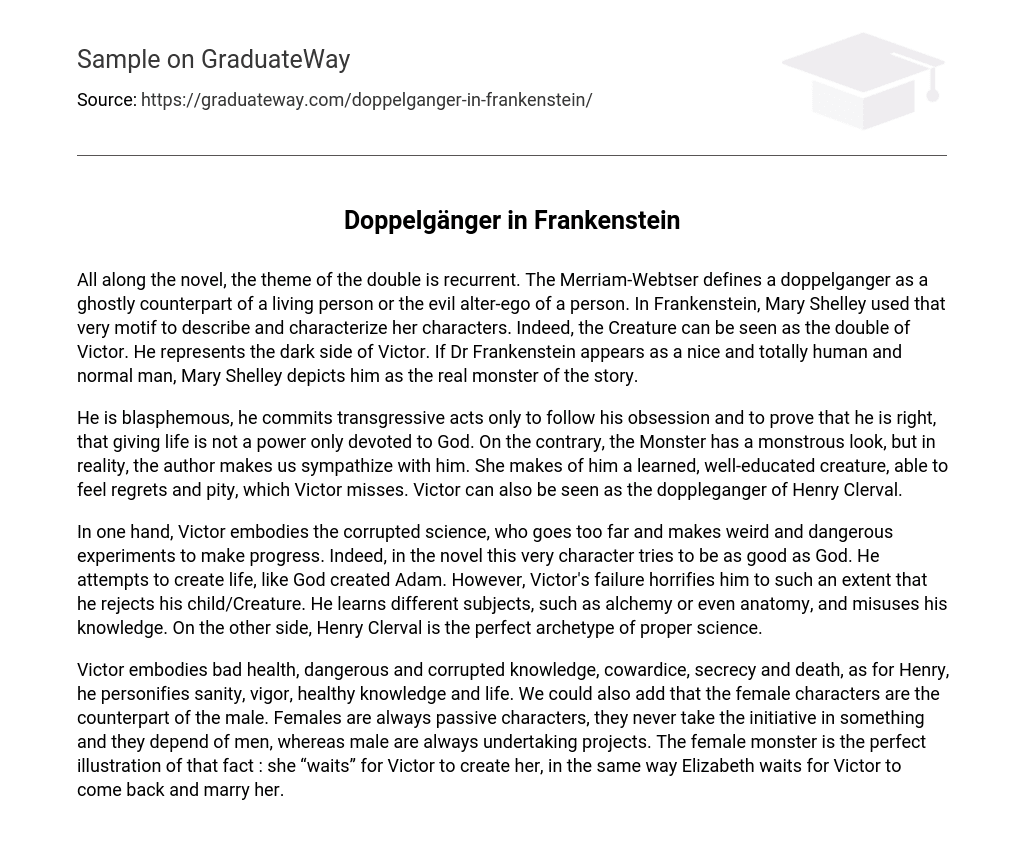The theme of the double is a recurring motif in Frankenstein. Merriam-Webster defines a doppelganger as the ghostly counterpart or evil alter-ego of a living person. Mary Shelley employs this concept to describe and depict her characters in the novel. Victor’s dark side is embodied in the Creature he brings to life, serving as his double. Despite appearing kind and ordinary, Dr. Frankenstein is portrayed by Shelley as the true monster.
The Monster’s blasphemous and transgressive acts are driven by his obsession to challenge the belief that only God has the power to give life. Despite his monstrous appearance, the author creates sympathy for the Monster by portraying him as a knowledgeable and educated being capable of remorse and compassion, qualities that Victor lacks. Additionally, Victor can be seen as a mirror image or twin of Henry Clerval.
Victor represents the depraved side of science, as he pushes boundaries and conducts eccentric and perilous experiments in the pursuit of advancement. The novel presents him as a character striving to equal God’s greatness, as he endeavors to bring life into existence, mirroring the creation of Adam by God. Nevertheless, the failure of Victor’s creation frightens him so profoundly that he disowns his own offspring, known as the Creature. He acquires knowledge in various disciplines, including alchemy and anatomy but misapplies his expertise. In contrast, Henry Clerval personifies the ideal form of scientific inquiry.
Victor embodies negative physical health, harmful and corrupted knowledge, cowardice, the act of keeping things hidden, and death. In contrast, Henry personifies mental stability, energy, beneficial knowledge, and life. Additionally, the female characters act as counterparts to their male counterparts. Females are consistently portrayed as passive individuals who never take the lead in any situation and rely on men. Conversely, males are always actively pursuing projects. The female monster serves as a prime embodiment of this dynamic: she “waits” for Victor to bring her into existence, just as Elizabeth waits for Victor to return and marry her.





